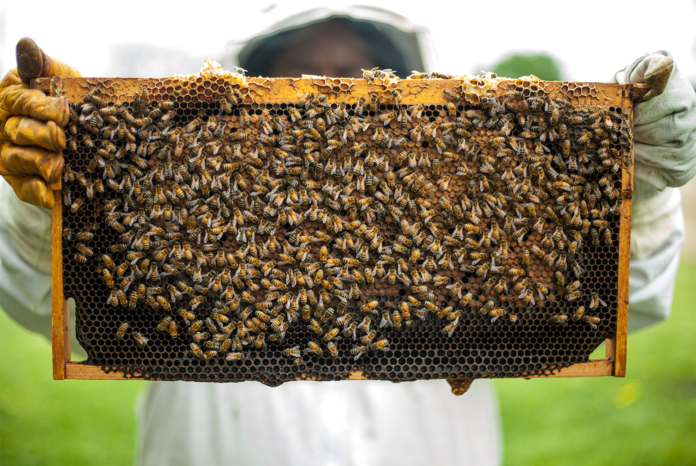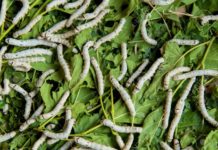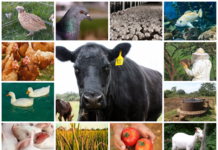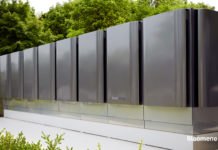What is apiculture?
Apiculture is the study of beekeeping especially on a commercial scale and giving the artificial environment to the bees. In Apiculture we study what are the types of bees, enemies of them and about their habits and colonies. The word Apiculture is derived from the Latin word ‘apis’, api indicates the meaning of bee and culture means growing some habitats. Nowadays in colleges and study institutions where teaching diploma and certificated courses. At TNAU(Tamil Nadu Agriculture Universities) is conducting a seminar every month.
History of apiculture
- 10,000 years ago we can find in the depictions in cave paintings that humans were collecting honey from wild bees.
- 9,000 years ago in North Africa Beekeeping in pottery vessels began.
- Around 4,500 years ago domestication of bees is shown in Egyptian art.
- In Spain, this period is associated with a type of rock art known as “art of the Spanish Levant”, because it occurs only within a limited area of the mountainous coast of eastern Spain, it is provisionally dated approximately from 8,000 to 2,000 BC.
- At some point, humans began to attempt to domesticate wild bees in artificial hives made from wooden boxes, pottery vessels, and woven straw baskets.
- Traces of beeswax are found in pot sherds throughout the Middle East beginning about 7000 BCE.
- In India, R. N. Mattoo was the pioneer of starting beekeeping with Indian honeybee, (Apis cerana indica –it was the type of bees which mostly found in India) in the early 1930s. Beekeeping with European honeybee, (Apis mellifera) was started by Dr A. S. Atwal and his team members, in the early 1960s O. P. Sharma and N. P. Goyal in Punjab. In the late 1970s, it remained confined to Punjab and Himachal Pradesh. Later on in 1982, Dr R. C. Sihag, working at Haryana Agricultural University, Hisar (Haryana), introduced and established this honeybee in Haryana. On the basis of these practices, beekeeping with this honeybee could be extended to the rest of the country. Now beekeeping with Apis mellifera was a grater amount in India.
Types of bees
- Melittidae (inc.Dasypodainae, Meganomiinae),
- Apidae (inc. honeybees, cuckoo bees, carpenter bees),
- Megachilidae (mason, leafcutter bees),
- Andreniade (mining bees),
- Halictidae (sweat bees),
- Colletidae (plasterer bees),
- Stenotritidae (large Australian bees)
Types of honey bees in India
- Rock Bee (Apis dorsata),
- Indian Hive Bee (Apis cerana indica),
- Dwarf Honey Bee (Apis florea),
- European Honey Bee (Apis mellifera),
- Indian Stingless Bee (Tetragonula iridipennis),
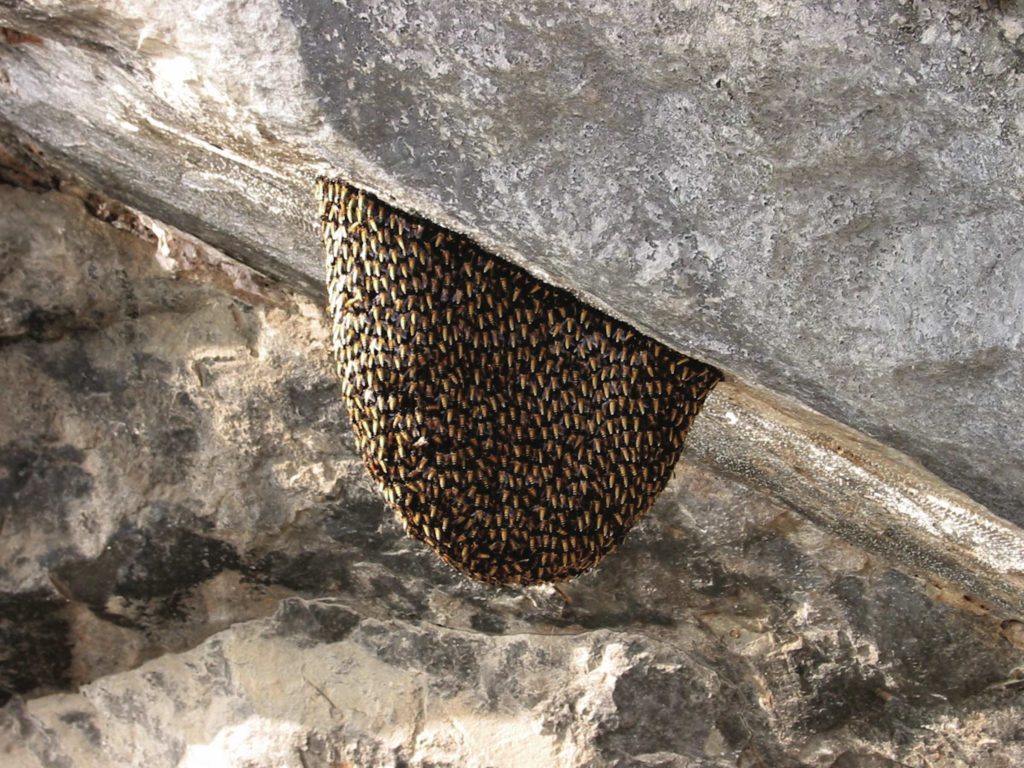
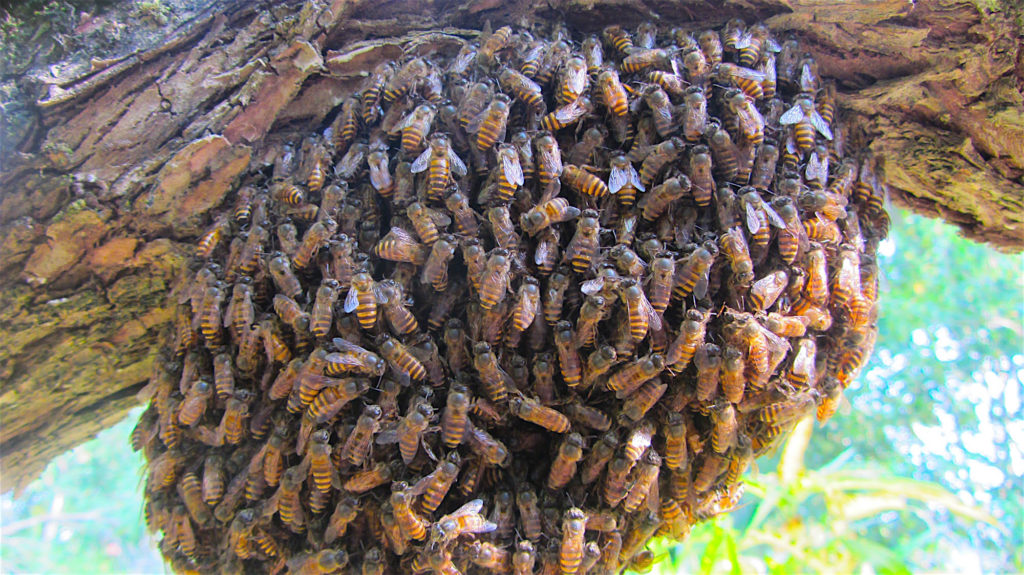
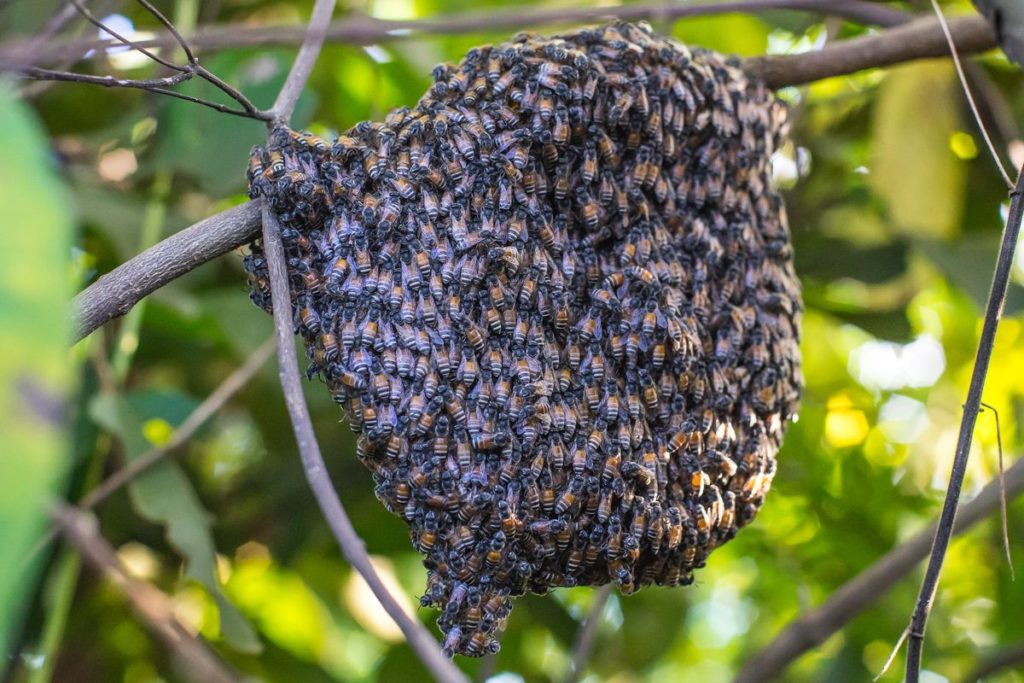
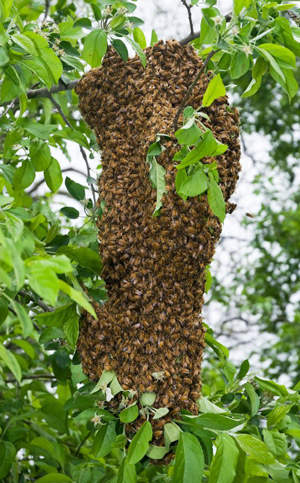
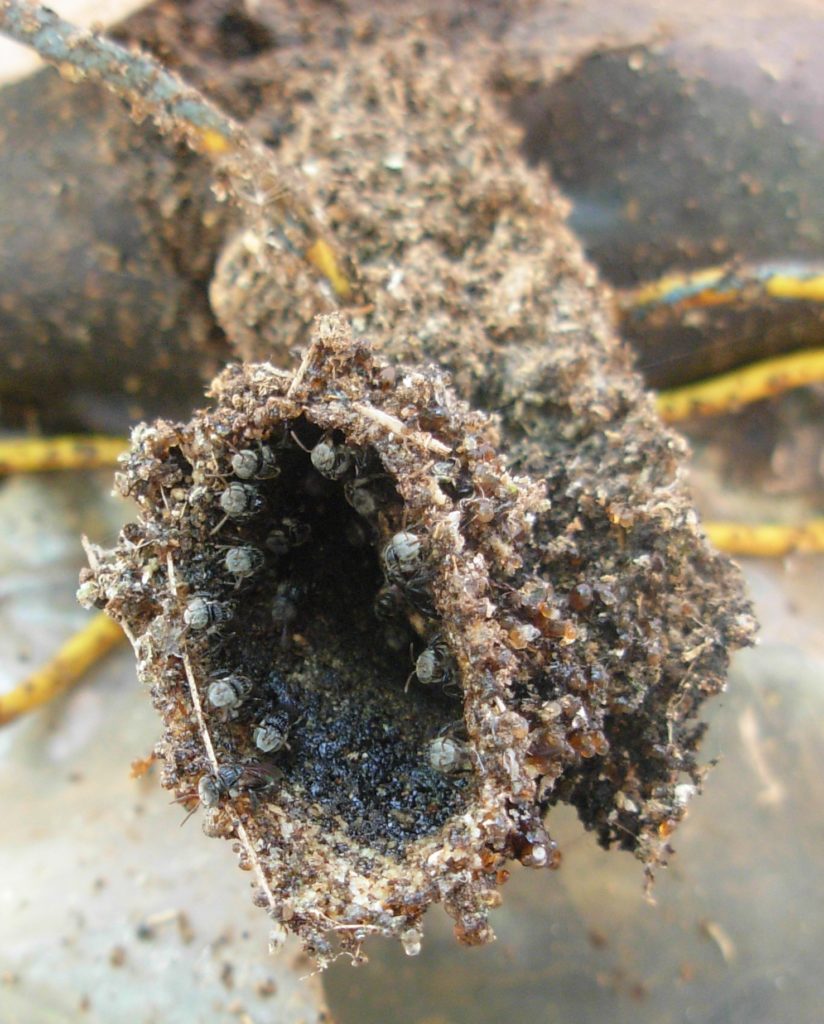
Apis dorsata (Rock bee)
Apis dorsata(Rock bee), the giant honey bee, is a honey bee of South and Southeast Asia, found mainly in forested areas. They are typically around 17–20 mm (0.7–0.8 in) long. Nests are mainly built in exposed places far off the ground, like on tree branches, under cliff overhangs, and sometimes on buildings. These bees are known for their aggressive defence strategies and vicious behaviour when disturbed. They construct a single comb in open about 6 feet long and 3 feet deep. They shift the place of the colony often. Rock bees are ferocious and difficult to rear. They produce about 36 Kg honey per comb per year
Apis cerana indica ( Indian hive bee)
Apis cerana indica, the Indian honey bee, is a subspecies of Apis cerana indica, the Indian honey bee, is a subspecies of an Asiatic honey bee which establishes mostly in south, southeast, and eastern Asia. It is one of the predominant bees found and domesticated in India, Pakistan, Nepal, Myanmar, Bangladesh, Sri Lanka, Thailand, and mainland Asia. Relatively non-aggressive and rarely exhibiting swarming behaviour, it is ideal for beekeeping. These types of bees are adaptive to man which is adaptive to beehives. This bee colony contains few worker bees than other bees. Their nesting habit means that they can potentially colonize temperate or mountain areas with prolonged winters or cold temperatures They are the domesticated species, which construct multiple parallel combs with an average honey yield of 6-8 kg per colony per year
Apis florea(Dwarf Honey Bee )
The dwarf honey bee (or Little bee), this type of bees was smaller than other bees. These bees take major parts in pollination. They build single vertical combs. They also construct comb in open of the size of palm in branches of bushes, hedges, buildings, caves, empty cases, etc. Apis florea has open nests and small colonies, which makes them more susceptible to predation than cavity nesters with large numbers of defensive workers. Apis florea has open nests and small colonies, which makes them more susceptible to predation than cavity nesters with large numbers of defensive workers. They are not rare as they frequently change their place. They produce about half a kilo of honey per year per hive
Apis mellifera (European Honey Bee)
The western honey bee or European honey bee (Apis mellifera) is the most common of the 7–12 species of honey bee worldwide. The western honey bee was one of the first domesticated insects, and it is the primary species maintained by beekeepers to this day for both its honey production and pollination activities. They are also similar in habits to Indian bees, which build parallel combs. They are bigger than all other honeybees except Apis dorsata. The average production per colony is 25-40 kg.
Tetragonula iridipennis(Indian Stingless Bee )
The Indian stingless bee or dammar bee, Tetragonula iridipennis, is a species of bee belonging to the family Apidae, subfamily Apinae. It was first described by Frederick Smith in 1854 who found the species in what is now the island of Sri Lanka. iridipennis have been kept in objects such as clay pots so that their highly prized medicinal honey can be utilized. This bee mostly found in and around India. They bite their enemies or intruders. It can be domesticated. But the honey yield per hive per year is only 100 gms.
Castes of honey bee
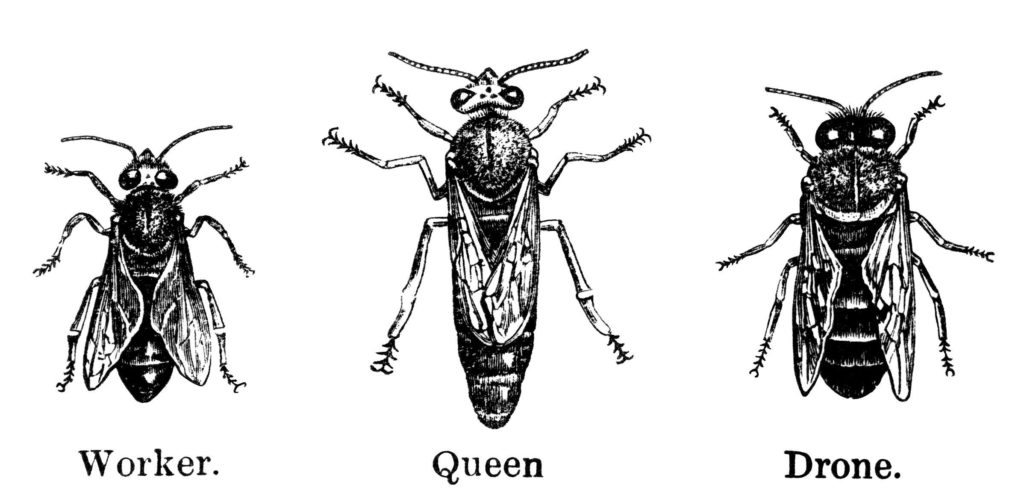
- The Queen,
- The Drone,
- The Worker.
The Queen
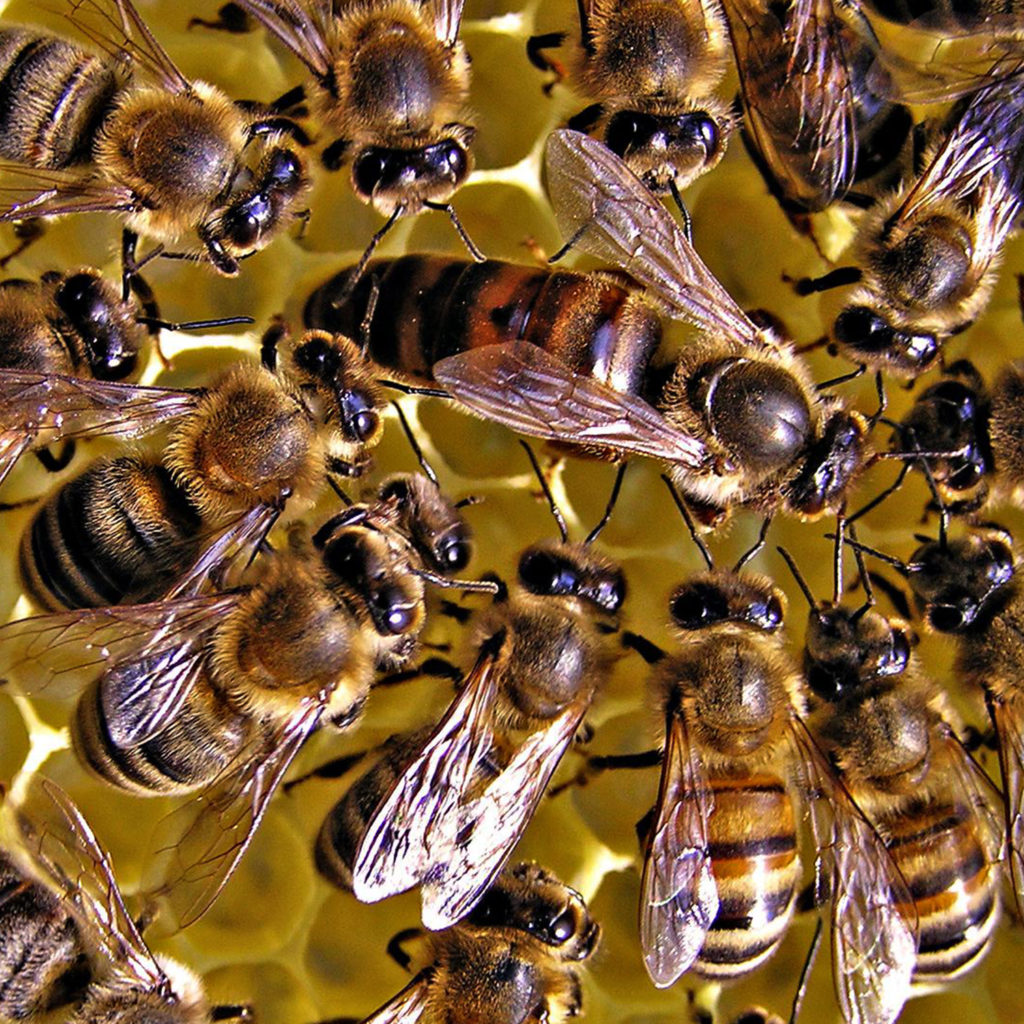
There is only one queen in a colony. It is considerably larger than the members of other castes. Her wings are much shorter in proportion to her body. The queen is the only individual who lays eggs in a colony and is the mother of all bees. It lays up to 2000 eggs per day in Apis mellifera. Five to ten days after emergence, she mates with drones in one or more nuptial flights. When her spermatheca is filled with sperms, she will start laying eggs and will not mate anymore. She lives for 3 years. The queen can lay either fertilized or sterile eggs depending on the requirement. The differentiation in worker and queen is due to the quantity and quality of food fed to the larva. The larva which .becomes the queen is fed the royal jelly, a secretion from hypopharyngeal glands of the worker bees. The queen is reared in large finger-shaped cells in the lower portion of the combs. Only one queen can remain in a colony, but during unfavourable season two queens are also observed. The old queen is killed as soon as the new queen is fertilized. Generally, queens are reared only during swarming season, but if the queen dies accidentally the bees can rear a new queen. The phenomenon of raising a queen in the off-season is called supersedure.
The Drone
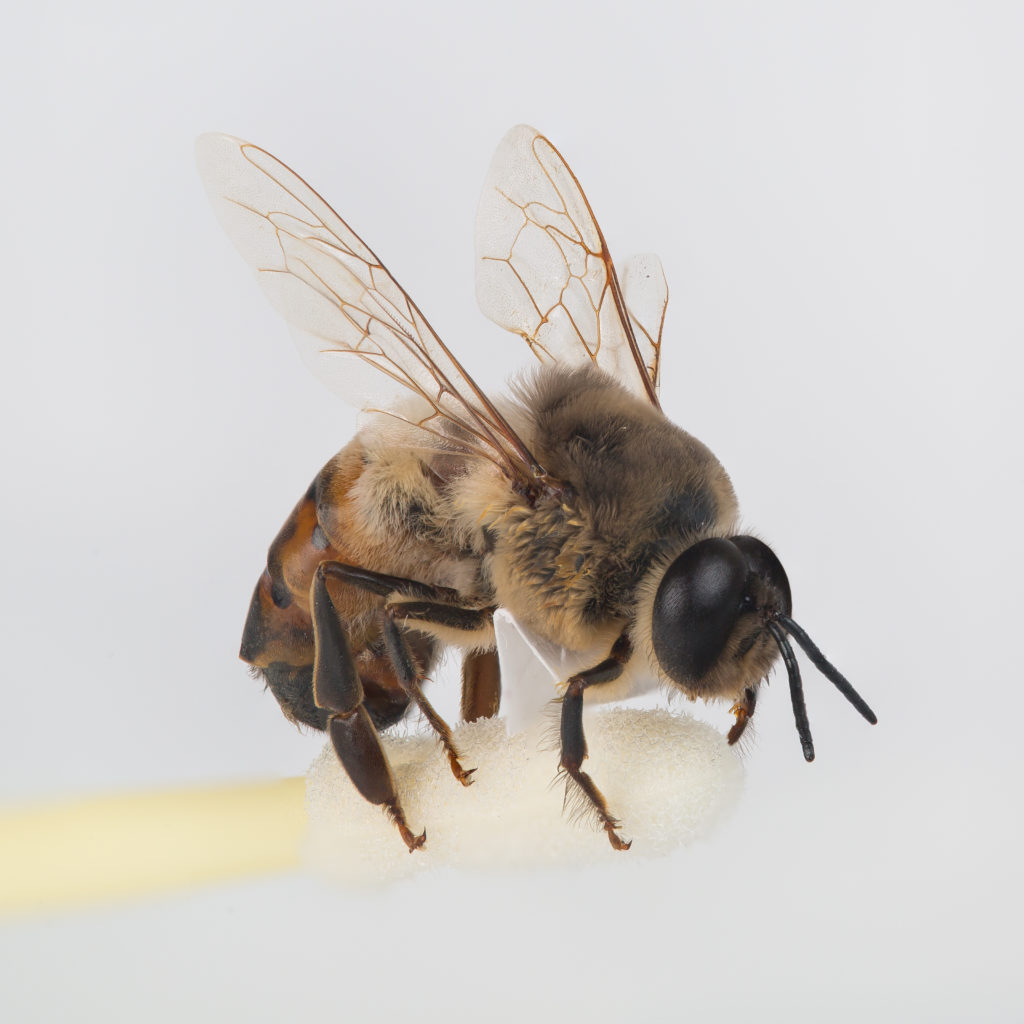
The drones are the male bees. They are much larger and stouter than either the queen or the workers although their body is not quite as long as that of the queen. They have no sting; a suitable proboscis for gathering nectar is also absent. They are, therefore, physically incapable of the ordinary work of the hive. Their only function is to impregnate the young queen a task which they are unable to perform until they are about 10 days of age. They also help in the maintenance of hive temperature. They go out of the hive only at midday when the weather is warm. The number of drones in a colony often is very large amounting to hundreds and sometimes to thousands. The drones are reared and tolerated during the breeding season. They are driven out of the hive to die of starvation before the monsoon and the winter. The drones are produced by unfertilized eggs of the queen, or by those workers which take up the reproductive function due to the absence of a queen in a colony. The normal life-span of a drone is 57 days. Mating takes place in the open when the queen is in flight. The drone dies in the act or immediately afterwards. Its abdomen has to burst open to allow the genital organ to function
The Worker
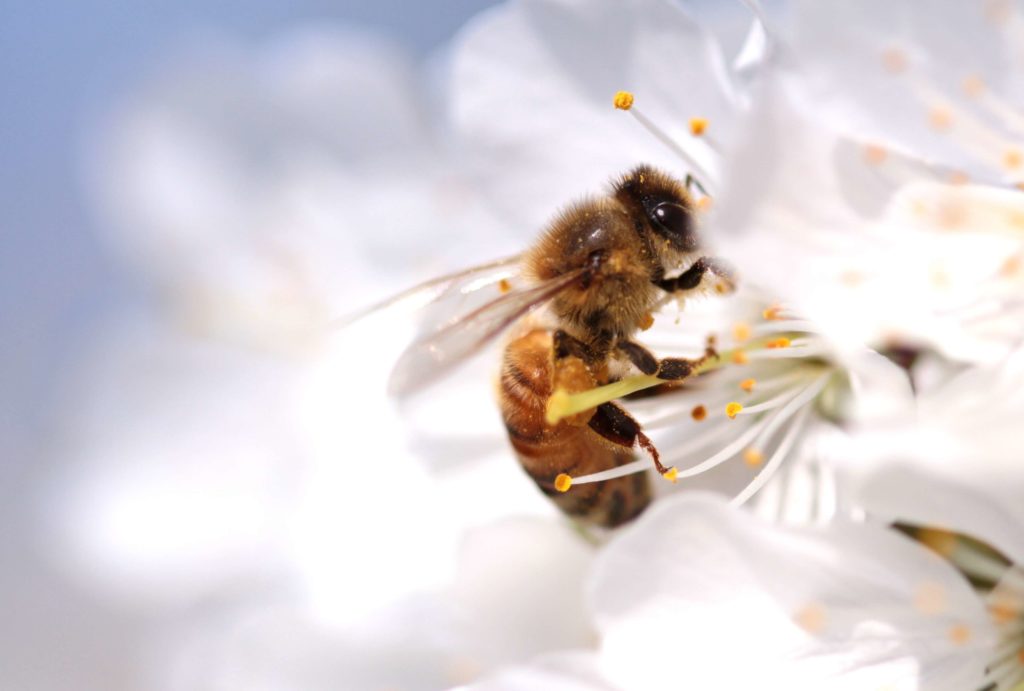
The workers are the smallest inhabitants of the beehive. They form the bulk of the population. The number of workers in a colony varies from 1,500 to 50,000. They are imperfect females incapable of laying eggs. On certain occasions when the colony is in need of a queen, some of the workers start laying eggs from which only drones are produced. These workers, called laying workers, are killed as soon as a new queen is introduced or produced in the colony. The life-span of a worker is about 4 weeks during active season and 8 to 10 weeks during the less active season. Their range of flights varies from 1,000 to 1,500 m. The division of work within a colony among the worker bees is based on the age of the individual and on the needs of the colony. Normally, the young bees, immediately after their emergence, do the work of cleaning cells and feeding older larvae. When they are grown and their hypopharyngeal glands have developed, they secrete the royal jelly with which they feed the younger larvae. These bees are called nurse bees. For the first 2 to 18 days of their life, the bees perform indoor duty inside the hive, including comb construction when some young bees start secreting wax. Later on, they become foragers, collect water, pollen, nectar, and propolis (bee-blue). Pollen is a nitrogenous food and is essential for brood – rearing and young bees. Beeswax, of which the comb is made, is a secretion of the wax glands located in the abdomen of the worker bees. For producing 1 kg of wax the bees consume 10 kg of honey. Thus the lifespan of workers can be divided into two phases as the first three weeks for household duty and the rest of their life for outdoor duty. Build comb with wax secretion from wax glands. Feed the young larvae with royal jelly secreted from the hypopharyngeal gland. Feed older larvae with bee-bread, a mixture of pollen and honeyFeeding and attending queen.Feeding drones. Cleaning, ventilating and cooling the hive. Guarding the hive. Evaporating nectar and storing honey, Collecting nectar, pollen, propolis, and water. Ripening honey in the honey stomach.
The Bee Dance

Round dance: When the food is nearby, the bee performs a round dance by travelling in circles once to left and once to right.
Waggle dance: When the food is far away, in other words, more than 100 meters away, the bee performs a waggle dance. The waggle dance involves the shivering of the abdomen in side-side motion. During this dance, the bee forms a figure eight.
The strength of the waggle, the number of times it is repeated, the direction of the dance, and the sound of the bee makes communication amazingly accurate. The dancing bees pause between the dances to give a taste of the food.
The following are the few indications about the direction of the food,
Running vertically up to the hive means food is in the same direction of the sun.
Running vertically down the hive means the food is present in opposite directions to the sun.
When it is dark, the worker bees touch the runner with the antennae to determine the direction of its run.
Honey
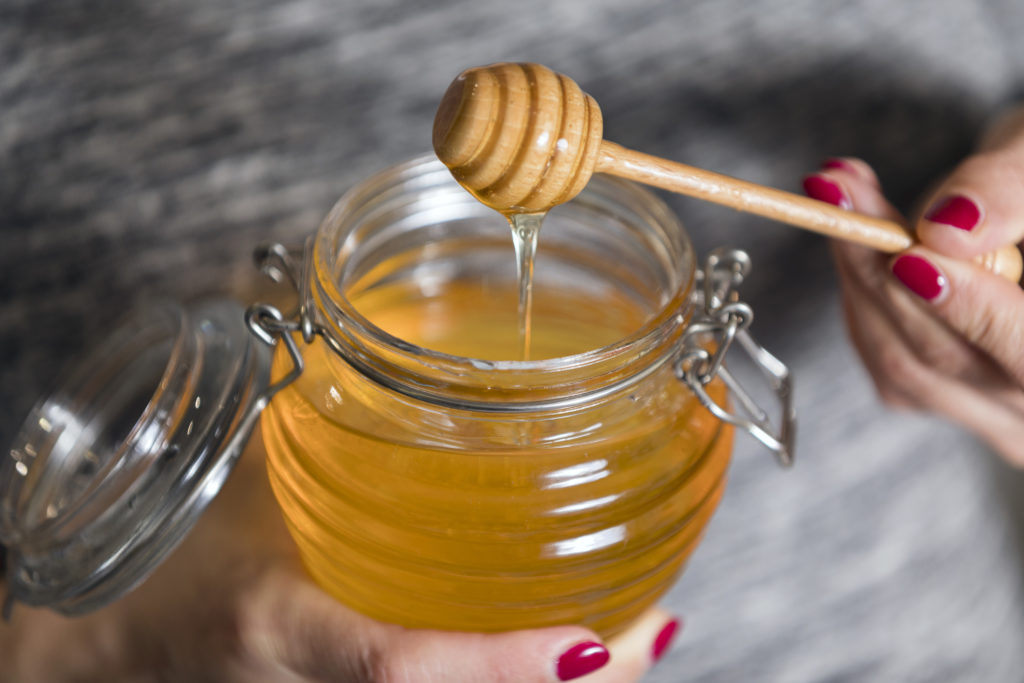
Honey is a sweet, glue-like substance made by honey bees. Bees produce honey from plants nectar (sugary secretions of plants), honey is used for many purposes like medical uses, contains nutrients, antioxidants, honey is less bad than sugar, etc.
Beekeeping
The pre-requisites which are considered must start beekeeping are as follows
- Knowledge and training on beekeeping
- Knowledge on local bee flora
- Sufficient local bee flora
- Knowledge of migratory beekeeping
Beekeeping requirements
- Purchase or build a hive
- Safety dress
- Smoker
- Knife
- Honey extractor
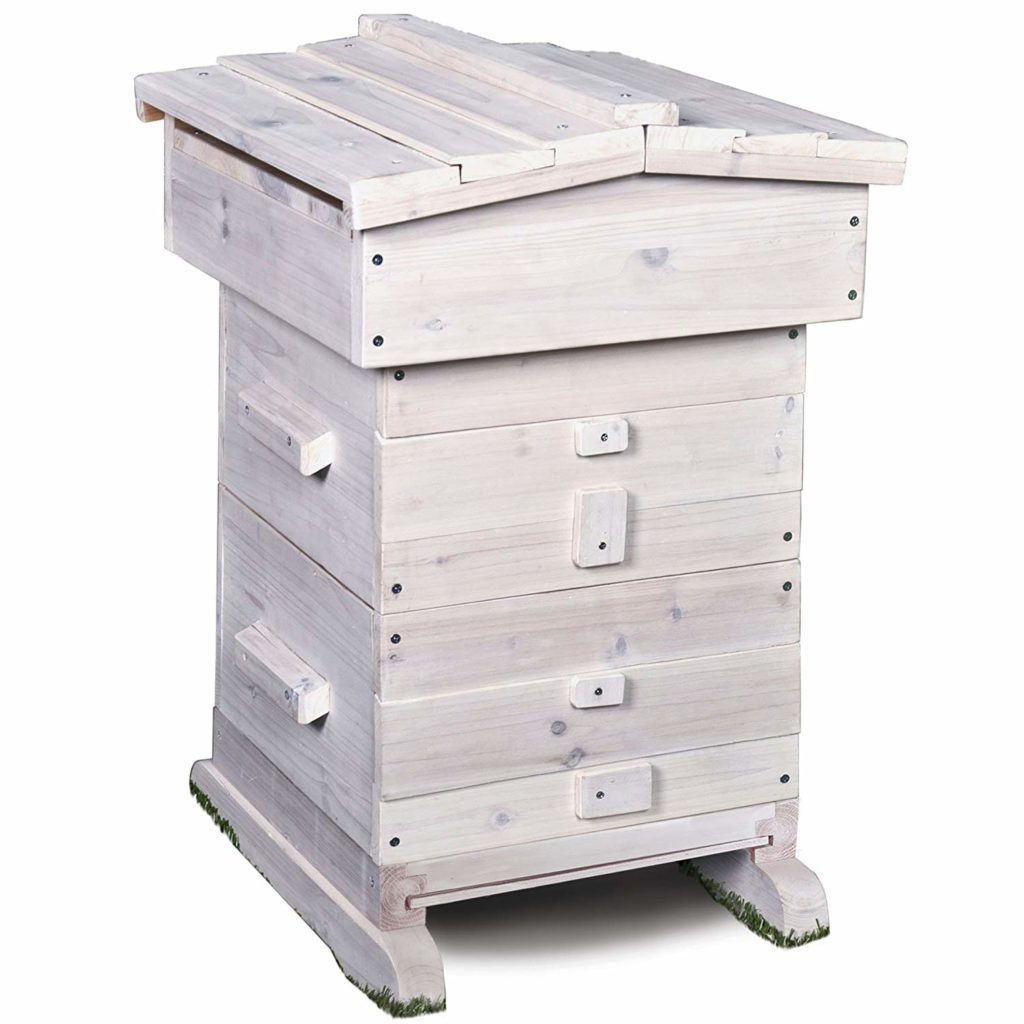


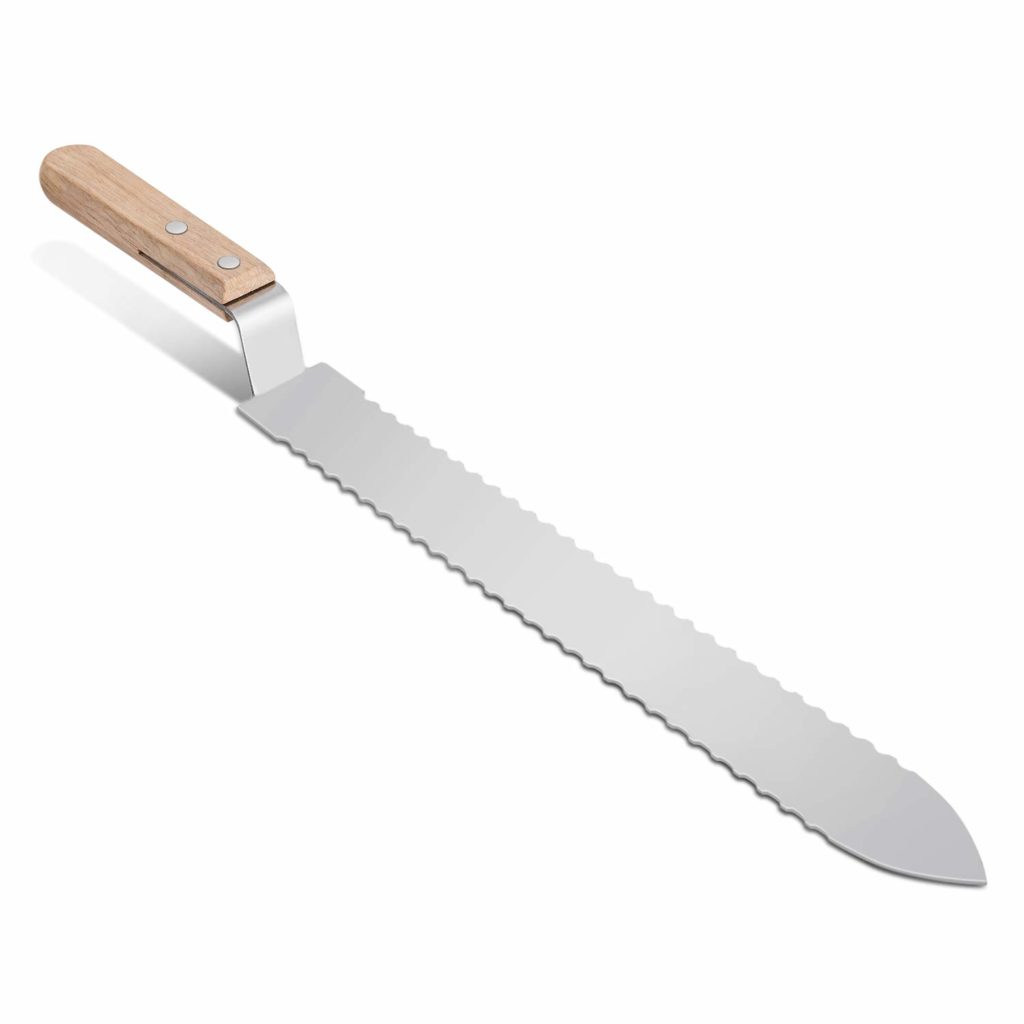

Location
of an apiary
Often a beekeeper is left with no choice for the location of his hives, say
when he intends to keep them in his backyard or a small home garden. But where
a selection among many possible sites can be exercised, the following points
require consideration.
- An apiary should be located where there is an abundance of nectar and pollen-yielding plants within the radius of about 1 to 1½ km.
- The site should not be exposed to strong winds or, at least the hives should not face the direction of the prevailing winds. Trees, bushes or trellis work may be provided to make the site windy.
- The site should be flat but with good drainage facilities
- Clean and fresh running water should be available to the bees in or near the
- A young orchard is an ideal choice. But thick groves may be avoided because the air becomes stagnant and during summer the atmosphere is close and muggy.
- If the site is shadeless and exposed, an artificial shed may be provided for
- An apiary should not be located too near a highway.
- A good barbed-wire fence or a live – hedge may be provided to keep out intruders.
- The site should be free from termite and black ant infestations.
Managing Apiary
- Apiary site requirements
- The site should be dry without dampness. High RH will affect bee flight and ripening of nectar.
- Water: Natural or artificial sources of water should be provided.
- Windbreaks: Trees serve as wind belts in cool areas.
- Shade: Hives can be kept under shade of trees. Artificial structures can also be constructed to provide shade.
- Bee pasturage and foliage: Plants that yield pollen and nectar to bees are called bee pasturage and foliage. Such plants should be plenty around the apiary site.
1.Hive inspection: Open the hive at least twice a week and inspect for the following details. Hive record also is to be maintained for each hive.
- Presence of queen
- Presence of eggs and brood.
- Honey and pollen storage
- Presence of bee enemies like a wax moth, mite, disease
2. Expanding brood net: It is done by providing a comb foundation sheet in the empty frame during honey flow period.
3. Supering (Addition of frames in the super chamber): This is done when brood chamber is filled with bees and all frames are covered. Comb foundation sheet or constructed comb is provided in the super chamber
4. During breeding season
During honey flow season there is a considerable increase in the foraging activity
of the workers and in the rate of egg-laying by the queen. Necessary additional
space has to be provided for all these and this is done
through the supply of new, clean, yellow combs or comb foundation sheets.
In the case of weak stocks, the population can be increased, taking advantage
of the favorable environmental conditions, by giving brood combs from strong
colonies or by simply changing its position to that of a strong colony on a
bright morning when the bees are busy. The bees of the strong
colony after their foraging trip return to the weak hive now located in the
site of their original home and thus the weak colony becomes strong. This
should be done in a prosperous season and at a time when bees are
busy.
5. Swarm control
The strength of colonies gets denoted as a result of Swarming. Swarming can be
prevented by clipping off special queen brood cells as they are constructed
since a colony does not send out a swarm unless a new queen is ready to take
the place of the reigning queen.
There are a few other methods of swarm control in which the natural instincts of the bees for dispersal and perpetuation of species are not curbed but aim at relieving the spatial congestion and readjustment of different castes and categories of population (a) Primary swarm is allowed to take place but trapped in a swarm trap and hived as a separate colony. The after-swarms are prevented by destroying the remaining queen brood cells (b) One or two brood combs in the strong colonies which are inclined to issue swarms are removed and given to weak colonies. (c) A brood comb with the reigning queen and a few workers took out and put in a separate hive and thus the colony is divided, (d) Inter-change of positions between a strong and weak colony.
6. Artificial feeding
Bees do not visit each and every flower. They visit only flowers having ample
pollen and nectar (non-toxic to them) and it should be within their reach.
Therefore, the bee flora of a particular region is most important for the bee
industry. Whenever there is a dearth of nectar and pollen in nature and the
stock of these materials is not in the hive, then artificial feeding becomes
imperative. The dearth periods vary from region to region in this country. If
the bees are not fed artificially during the dearth period, they start starving
and dwindling, develop wanderlust and ultimately abscond. White sugar syrup is
a cheap substitute of honey but no pollen substitutes have been tried in this
country although different pollen substitutes have been found useful elsewhere.
Attempts to replace sugar syrup by cheap cane jaggery to the colonies resulted
in the absconding of bee colonies because in most of the cases they did not
accept it and suffered from starvation; in some cases, if they accepted it they
suffered from dysentery.
Preparation of artificial feed. Sugar syrup is prepared by dissolving 100 g of sugar in 150-200 ml of hot water, boiled and cooled. It is offered in 400 ml glass-bottle or cigarette tins with their mouth covered with a mark in cloth held tightly with a rubber band or thread. The syrup bottle is placed upside down in the super with or without inner cover. The colonies should be fed on alternate days in the evening.
Effect of artificial feeding: The bee colonies should be fed well during the dearth period, especially in the winter season. In such cases swarming is induced earlier and this helps a beekeeper in making the bee colonies strong before honey-flow season starts.
7. Provision of Drinking Water
A source of freshwater within a short distance of an apiary is essential. Water
is required to blend with the food and to lower the temperature of the hives
during hot weather. Water can be supplied in a tank or an earthen pot set up so
as to permit the water to drip. The water can be given in a glass bottle inside
the hive also.
8. Uniting bee colonies
The question of uniting stock of bees arises only when the colony becomes weak
or queenless and all attempts of requeening fail. It is then necessary that
weak colonies should be united. As each colony has its own peculiar odor, it is
necessary either to blend the odors of the two colonies slowly or suppress both
by a stronger one. If this is not done the bees of the two colonies fight. The
colonies to be united should be brought near each other by moving them closer,
0.5 to 1.0 m each day, so that incoming bees may not drift back to old site
when the colonies are sufficiently close. Two other methods described below can
also be used for uniting the colonies.
Newspaper method: Bring colonies side by side by moving 30 cm/day
- Remove queen from week colony
- Keep a newspaper on top of brood chamber of queen known as right colony
- Make holes on the paper
- Keep the queenless colony on top of the right colony.
- Close hive entrance so that the smell of bees get mixed in both the colony
- Unite bees to the brood chamber and make it one colony.
Smoke method: Both colonies should be smoked heavily and then dumped into one hive. More smoke should be blown into the common hive.
9. Handling the Queen
The queen is the most important and indispensable individual in the bee colony
and should be handled properly and carefully.
10. Finding the queen
The presence of an active queen in the colony can be judged by the presence of
worker eggs. If, however, it is essential to spot her or to catch her, then she
must be searched properly. In a strong colony sometimes it may be difficult to
spot the queen at the first look.
Test for the absence of a queen. It is often necessary to be sure that a colony is really queenless before introducing a new queen. The bees of a queenless colony always develop nervousness. They do not sit properly in the comb. There will be no egg-laying or worker egg-laying without uniformity in combs (more than one egg in cells).
11. Introduction of the queen
Of several methods of introducing the queen, some are direct and others
indirect. For the safe introduction, first, it should be made sure that the
colony into which it is to be introduced is really queenless and further that
no queen cell is present in the brood combs. The queen should be put into a
queen-introducing cage, with the exit plugged with queen candy, and then placed
in the center of the brood nest. The queen can be kept in a small specimen
tube, the mouth of which is closed with a muslin cloth having a small hole to
permit it to escape eventually.
12. Increasing the Number of Colonies
It is very important for the beekeeper to increase his bee colony every year
and this can be done by dividing the existing colonies into 2 or 3 sub-colonies
with fresh queens.
(i) A bee colony can be established by purchasing it from a private or a government organization. Only those colonies should be selected or purchased which have at least 5-6 brood frames covered with bees and a healthy active queen.
(ii) The number of colonies can be increased by dividing the existing colonies during the swarming season when the queen cells are constructed. It is done by keeping 50 percent brood combs with the old queen in an empty hive. The hive should be removed at least 0-8 km away from its original site. The other half of the colony with queen cells should be kept in the original site.
(iii) Another method is to let the colony swarm, and the swarms’ arc captured and transferred to empty hives by giving brood comb from another colony. The swarms can be kept in the same vicinity.
(iv) Bee colonies can be captured from natural sources. Before bagging the colony, smoke should be applied. The combs are cut and placed in frames with wire to which they are firmly secured. The frames are transferred to a hive along with the bees.
Seasonal management: Pollen and nectar are available only during a certain period. When a surplus food source is available it is known as honey flow season. In contrast, during dearth period there will be scarcity of food. During extremes in climate like summer, winter and monsoon certain specific management tactics are required.
13. Honey flow season management
This season coincides with spring. During this season,
- Provide more space for honey storage by giving comb foundation sheet or built combs
- Confine queen to brood chamber using a queen excluder
- Prevent swarming as explained in swarm management
- Prior to honey flow, provide sugar syrup and build sufficient population
- Divide strong colonies into 2-3 new colonies, if colony multiplication is needed
- Queen rearing technique may be followed to produce new queens for new colonies
14. Summer management
Bees have to survive intense heat and dearth period by the following means.
- Provide sufficient shade, under trees or artificial structure
- Increase RH and reduce heat by Sprinkling water twice a day on gunny bag or rice straw put on the hive
- Increase ventilation by introducing a splinter between brood and super chamber
- Provide sugar syrup, pollen supplement, substitute and water
15. Winter management
It includes the following
- Maintain strong and disease-free colonies
- Provide new queen to the hives
- Provide winter packing in cooler areas hilly regions
16. Management during the dearth period
- Remove empty combs and store in an airtight container.
- Use dummy division board to confine bees to a small area
- Unite weak colonies
- Provide sugar syrup, pollen supplement, and substitute
17. Rainy season and monsoon management
- Avoid dampness in the apiary site. Provide proper drainage
- In the rain when bees are confined to the hive, provide sugar syrup feeding
18. Bee pasturage or bee forage
Plants that yield pollen and nectar are collectively called bee pasturage or
bee forage. Plants which are a good source of nectar are tamarind, moringa,
neem, Prosopis juliflora, Soapnut tree, Glyricidia maculata,
eucalyptus, Tribulus Terrestris and pungam. Plants which are good
sources of pollen are sorghum, sweet potato, maize, tobacco, millets like
cumbu, tenai, varagu, ragi, coconut, roses, castor, pomegranate and date palm.
Plants which are a good source of both pollen and nectar are banana, peach,
citrus, guava, apple, Sunflower, berries, safflower, pear, mango, and
plum.
Foraging: This refers to the collection of nectar and pollen by bees.
Nectar foragers: These collect nectar from flowers using a lapping tongue and pass the nectar to hive bees. Hive bees repeatedly pass the nectar between the preoral cavity and tongue to ripen the honey. Later they drop the ripened honey into cells.
Pollen foragers: They collect pollen by passing through different flowers. Pollen sticking to the body is removed by using pollen comb. Then it is packed using pollen press into corbicula or pollen basket. A single bee carries 10 to 30 mg of pollen which is 25 percent of bee’s weight. Then the pollen is dislodged by the middle leg into cells. Pollen is mixed with honey and stored.
Pests and disease
1. Wax moths
The greater wax moth, Galleria mellonella L. (Galleriidae) enjoys worldwide
distribution and its occurrences have been noted from the very early days of
Aristotle (38322 B.C.). In South India, it is seen causing severe damage in the
plains and lower altitudes but it is rare in high altitudes. It is one of the
most observed throughout the year but more common and severe during July to
October and November to December. Combs of all the species of Apis are
freely attacked. It is one of the most important enemies of the bee colony
causing serious damage particularly to weak colonies where the number of bees is
not sufficient enough to cover all the combs.
The caterpillars live in silken tunnels made by them and feed on the propolis, pollen, and wax in the combs. As they penetrate the wax layers, particles of wax are dislodged and fall into the cells and in the hive. The presence of loose dislodged particles in the hive is the first symptom of attack. When the infestation is serious the comb is seen covered with silken webs with numerous black fecal particles of the caterpillars. Usually uncovered or partially covered combs and weaker colonies are damaged. In such cases, bees abandon the colony.
The adult female moth enters the hive during the night and in case of weak colonies even during day time and lays eggs in the cracks and crevices of the hive and comb. About 200—800 eggs are laid in batches by a single female in course of a fortnight. The eggs are creamy white in colour and hatch in 8 to 10 days into tiny white caterpillars about 3 mm long. Full-grown caterpillar is !dirty grey in colour, cylindrical, smooth and about 2.5 cm long. The larval period extends over a month. Pupation takes place in a silken cocoon among the debris of the combs in the corner crevices of the hive. The pupal period is about 8 days. The adult is brownish grey in colour, 10 to I5 mm long and the outer as of the fore wings of the males have a semicircular notch they are smooth in females. Mating takes place soon after and eggs are laid in a day or two after mating. The lesser wax moth, Achroia Frisella, is seen in comparatively higher altitudes. The caterpillars feed mainly on the debris of the combs. The larvae of another wax moth occur both inside the combs and on the floorboards of working colonies.
These wax moths at times decap the sealed cells exposing the pupae inside and this diseased condition is referred to as bald brood.
The insect can be controlled by frequent examination of all the crevices of the hive and removing all debris. The excess of the hive not covered by the bees is removed and stored after fumigation with ethylene bromide. In the storerooms, the spare should be stored in tightly closed containers.

2. Ants
The black
ant, the-household red ant are dangerous enemies of the
bee. They attack weak colonies and carry away the honey, pollen, and brood.
Strong colonies are able to withstand the ants, but in weak colonies, ant
attack will result in destruction and end of the colony. By providing ant pans
around the bases of the stand or oil bands over the stands ants can be kept
away. Underground ant nests are eliminated by dusting of Methyl parathion or
carbaryl or pouring 0.1% chlorpyriphos solution.

3. Wasps
The yellow-banded hornet is a large wasp with a broad transverse yield band on
the abdomen. It is a social insect constructing papery nests in hollow
spaces. It waits for an area the entrance of the hive, catches bees as
they come out, macerates them for feeding the juice to its young. It captures
bee in the field also. By reducing the width of the alighting board of the
hive, the wasps can be prevented from sitting near the entrance Wasp nests
should be destroyed by burning them is also known to attack bees in India.
The bee-hunter wasp, Palarus Orientalis Kohl., is black in colour with transverse yellow lines on the abdomen. It catches bees while they are on a flight. A wasp can collect about 20 bees a day, stings and carries them to its underground nest and places one in each of the compartments of the nest before laying an egg on the back of each bee. The grub on hatching feeds on the bee.
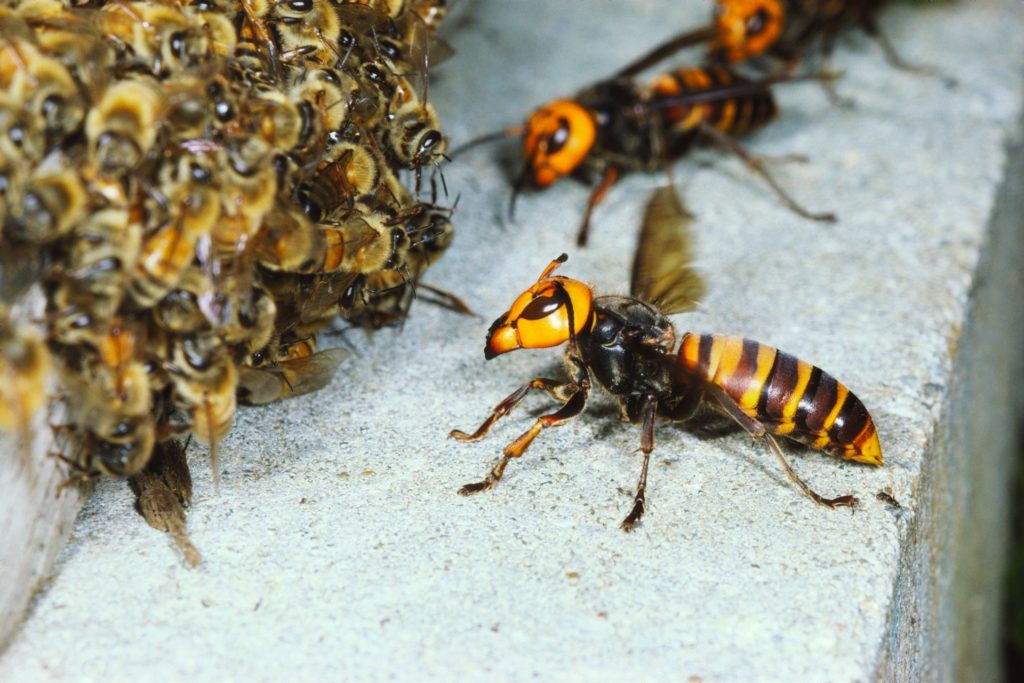
4. Wax beetles
The tenebrionid beetle is found in the hives under unhygienic conditions
feeding on the debris and on old combs in weak colonies. Periodical examination
of empty combs and regular cleaning of the bottom boards will control the
enemy.
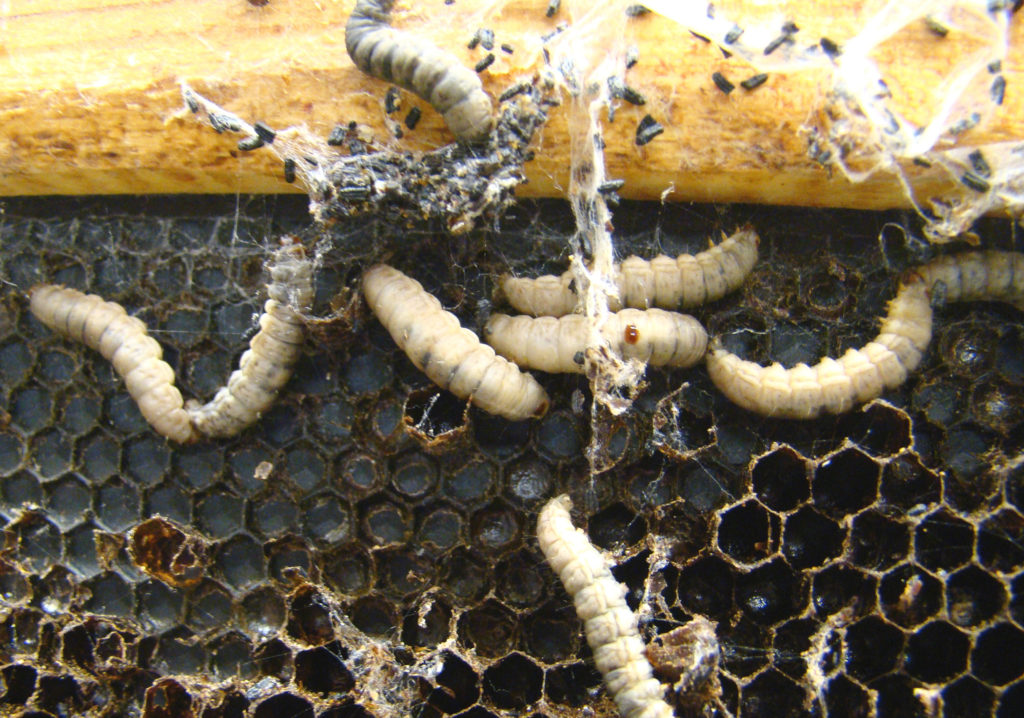
5. Birds
King crow and the bee cavers capture bees and devour them.
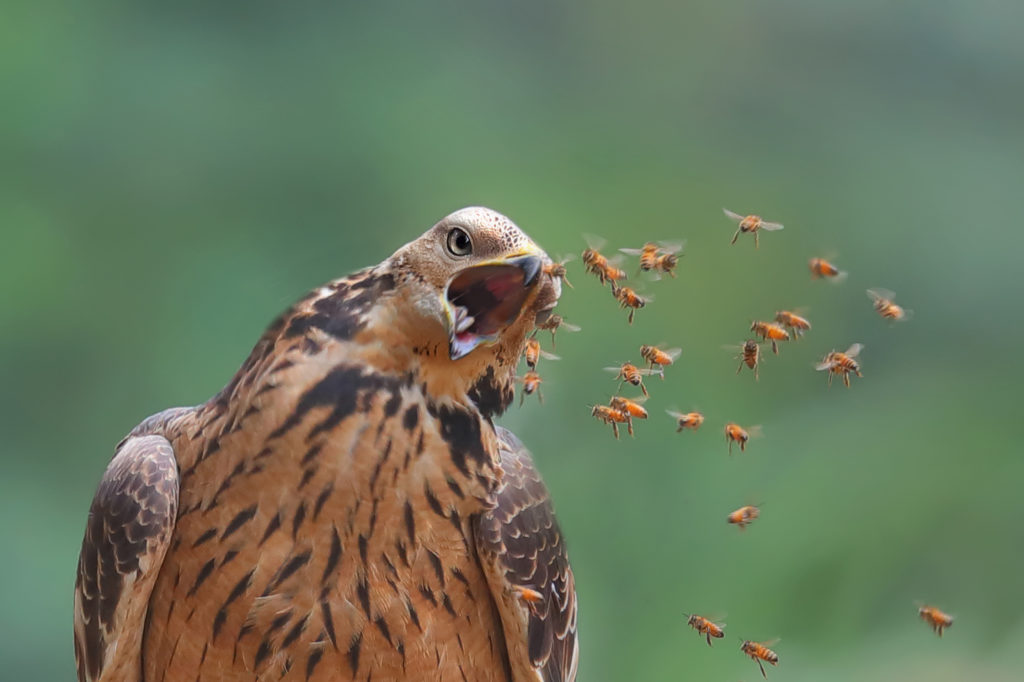
6. Tracheal Mites
The tracheal mitecauses Acarine disease of adults. They feed on the blood (hemolymph) by piercing with their mouthparts through the tracheal walls. It causes ‘K’ winged condition in bees, where the wings are held at unusual angles and bees are unable to fly. Bees are seen crawling in front of the hive.
7. The parasitic mite Varroa destructor
These mites are ectoparasitic and attack both Indian and Italian bees. It feeds on the early stage of lava and prepupa. The adult mites are broader than long. All the above mites can be managed by dusting micronized sulfur on the frames or by burning Folbex strips (Bromopropylate) as a fumigant inside the hive. The mites can also be controlled by keeping absorbent cotton soaked in 65 percent formic acid.
8. Bee mites
Mites are microscopic and are ecto or endoparasites of honeybees.
9. Brood mite, Tropilaelaps clareae
These mites are serious ectoparasites on brood and adults of Apis mellifera.
They attack the brood and cause larval death. Perforations are seen on the
brood cells. The adult mites are longer than brood.
10. Other enemies
The ‘death’s head’ moth enters the hive and consumes honey. Occasionally
cockroaches enter weak colonies and impart a foul smell to the hive. Lizards,
frogs toads capture bees at hive entrances. Bears dismantle the hives and eat
upon honey, pollen, brood and the bees. Termites damage wooden parts of the
hive; to check this the stands should be painted with coal tar. The termite
mounds are seen near the apiary-aid be destroyed by applying 0.1% Chlorpyriphos
solution into the nests. The nymphs and adults of the Arachnid, Ellingsenius
indicus C., cling to adult workers in hilly regions
DISEASES OF HONEY BEES
There are a number of diseases that affect honeybee in India. Of the major
diseases which affect honeybee are the Acarine and Nosema diseases
of the adult bees and the brood diseases of larval stages.
1. Nosema Disease
This disease is caused by a protozoan, Nosema apis. The Nosema infestation
leads to dysentery. The flies are unable to fly and void loose excreta on the
combs, frames, and ground in front of the hive. It mainly affects the flight
during cold weather. An antibiotic known as Fumagillin is useful in controlling
the infection. The drug is administered by giving a feed of 100 mg fumagillin
per colony in 250 ml of sugar syrup for 10 days continuously.
2. Broad Diseases
Honey bee broods suffer from a variety of diseases. Loss of brood affects
colony strength. Adult bees are not affected by brood diseases but they can
spread the casual organisms. Brood diseases are more serious than adult
diseases. Brood diseases of bees are described below.
a. European foul-brood
b. American foul-brood
c. Sac foul-brood
d. Thai Sacbrood virus (TSBV)
e. Chalk foul-brood and stone brood disease
Out these brood diseases, the European foul-brood disease, and the Thai
Sac-brood disease are common in India.
a. European foul-brood
disease, Streptococcus pluton
This disease was first noticed in Mahabaleshwar and is now widespread.
The disease is believed to have been introduced along with Apis
mellifera imported from exotic sources. The disease is caused
by the non-spore-forming bacterium, Streptococcus pluton along with Bacillus
alvei as a secondary invader. The disease affects larvae of
all castes. The symptoms are: the larvae turn watery, yellow then brown and
lastly dark coloured. The tracheal system becomes visible and larva dies in a
coiled stage causing foul smell. In advanced stages, a hempy non-elastic thread
is formed. Dead larvae are usually found in unkept cells with no predominant
odour. Scales and larvae lie in any position. The disease occurs at a time when
there is active brood rearing. Cells are poorly capped and mixed with normal cells.
The use of antibiotic Terramycin is most effective in treating the disease.
Terramycin is given dissolved in sugar syrup @ 100 mg of active Terramycin in a
liter of syrup. The Terramycin syrup (freshly prepared) is fed every seventh
day. The disease can also be controlled by fumigation with ethylene oxide.
Quarantine is a must to prevent entry of any of the bee diseases.
b. American Foul Brood, Bacillus larvae
American foulbrood is a disease affecting the bee larvae and is caused by Bacillus
larvae White. The disease is prevalent in many
tropical and sub-tropical countries. The pathogen is a rod-shaped, flagellated,
motile bacillus highly resistant to heat, desiccation, and disinfectants.
Larvae of workers, drones, and queens are all infected through ingestion of
spores with their food. The spores germinate in the gut, penetrate the gut wall
usually at about the time of pupation and reach the hemolymph there they
multiply in large numbers. Youngest larvae are the most susceptible. The
diseased larvae are removed and rejected by the nurse bees; those which are not
thus removed die at the prepupal or pupal stage after they have spun their
cocoons with their bodies stretched on their hack stand head inclined toward
the cell cappings. They turn brown and putrefy emitting a disagreeable fishy
odor. They dry and the cell cappings become dark coloured and sunk inwards. Now
the adult bees repair the cells. The infection is spread by the nurse bees
engaged in cleaning the cells. The larvae which are reared in cells previously
occupied by diseased have also become infected. During good
nectar-flow periods the diseased colonies may recover but during dearth periods
the loss at be considerable.
The disease can be controlled by the total destruction of the diseased colony including the hive, frames, bees, and honey. In western countries, some strains resistant to have been evolved.
c. Sac-brood disease (SBV)
Sacbrood is a virus disease attacking Apis mellifera. The diseased larvae appear sac-like and
hence the name. But so far this disease is not reported in India.
d. Thai sacbrood virus
(TSBV)
The causative agent is the Thai Sac-brood virus. This virus attacks
specifically Apis
cerena indica. The dead brood is found in prepupal but sealed
stage. The pupae turn into sac-like structures filled with lemon-coloured
liquid at the posterior end. In advanced stage, the larvae change their
appearance from yellowish to brownish to black colour. No discernible foul odor
is noticed. Many Indian bee colonies were destroyed by TSBV in South India
during the early 90s and caused severe loss to the beekeeping industry. No effective
method to control this disease is known as yet.
Prevention is better than cure. It is better to isolate the infected colonies. Combs from diseased colonies should not be used for any other purpose and dequeening the colony for a few days followed by requeening with a healthy queen from a strong colony is effective.
e. Chalkbrood disease and
stone brood disease
The fungus Ascosphaera
apis that causes chalkbrood only attacks larvae. When the
spores are ingested, they germinate and mycelia grow through the body
penetrating the epidermis and covering the pre-pupa in a short time-span. They
cause mummification of the diseased larvae.


